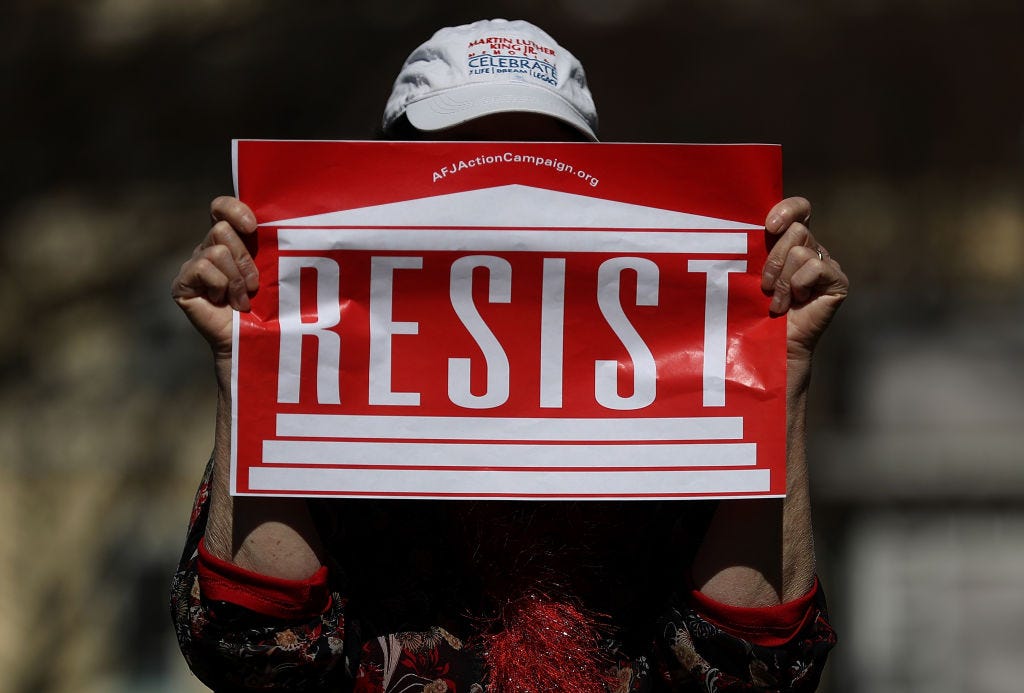The #Resistance Didn't Save Us from Trump. It's Time to Build Something Real
Much of the so-called 'Resistance' movement was simply hashtag activism that undermined the reality of the situation and worsened the crisis we now face.

There was a moment after Donald Trump’s election in 2016 when life felt full of threat and promise. For some, it was unthinkable that this repulsive demagogue with a walk-in closet of skeletons could be elected, but then the reaction, as if the country was waking up and taking on reality full-bore, seemed for a moment incredibly encouraging. The Women’s March following Trump’s inauguration spoke of a possible popular pushback. The Black Lives Matter and other protests of 2020 represented the beginnings of a wrestling with white supremacy, capitalist exploitation, and the undeniable relationship between those poisons. And then, we returned to the beginning. Possibly even worse off.
Any movement forward must now reckon with and learn from the failures of the so-called “Resistance” movement against Trump. The moments that now stand out were actual representations of organizing and solidarity, while much of what passed for activism was something else entirely.
This should have been made apparent in the last year as the atrocities and horrors in Gaza and Lebanon splintered any semblance of a coalition that had powered this pseudo-movement. Watching opponents of Trump legitimize and even support authoritarian actions was miserable business, but instructive in understanding the true nature of what had taken place in American politics and culture. Laid bare was a stark division between those who wanted the world to change for the better and those who wanted to express those desires while maintaining the disastrous status quo.
To put it simply, much of “the Resistance” was hashtag activism, a social-media-driven simulacrum that allowed people who disliked Trump and feared what he and a radical GOP might do to feel as if they were playing a role in the opposition. By posting and retweeting and even purchasing a slew of products expressing their “beliefs” they were able to feel the satisfaction associated with being part of a movement but none of the actual political benefits. It should be said that this directly mirrors the QAnon conspiracy theory (of course, without the insanely violent rhetoric and actual violence) and the reasons why it has proliferated and grown in purchase.
In other words, QAnon and the Resistance were parallel structures. Both posited:



